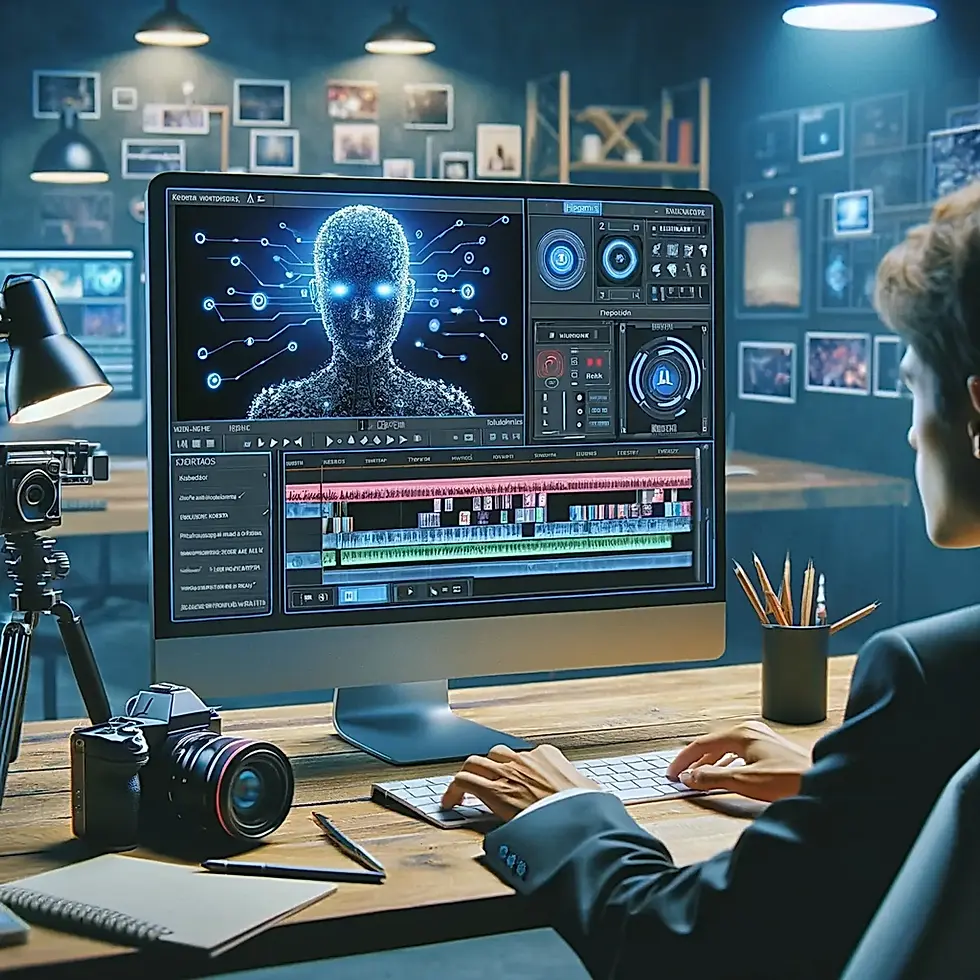Thiloththama Jayasinghe, Jadetimes Staff
T. Jayasinghe is a Jadetimes news reporter covering Travel News

In recent years, Artificial Intelligence (AI) has transformed the way we create, manipulate, and distribute digital content. Among its many applications, AI-powered tools for creating fake videos or footage—often referred to as *deepfakes*—have garnered significant attention due to their potential for both innovation and misuse. Below is a detailed exploration of this technology, its applications, risks, and ethical considerations.
What Are Deepfakes?
Deepfakes are synthetic media where a person in an existing video is replaced with someone else's likeness, or entirely new content is fabricated. This is achieved through machine learning algorithms like Generative Adversarial Networks (GANs), which learn to replicate visual and audio elements from existing data.
How Are Deepfake Videos Created?
1. Data Collection:
The process begins with gathering extensive data, such as video clips, photos, and audio recordings of the target person or object to be faked.
2. Training the AI Model:
AI models, like GANs or autoencoders, are trained to analyze and learn the target's facial movements, voice, and mannerisms.
3. Content Generation:
Once trained, the AI creates a synthetic version of the subject, seamlessly integrating it into the desired video or creating an entirely new one.
4. Editing and Refinement:
Post-production tools refine the generated content, adding realistic lighting, shadows, and sound synchronization.
Tools for Creating Fake Videos
Several AI tools are available for creating fake videos, including:
DeepFaceLab: Popular for creating high-quality deepfakes.
FaceApp & Zao:User-friendly apps for swapping faces in short clips.
Synthesia:Used for creating AI-generated avatars with customized voiceovers.
Runway ML:A tool for generating AI-assisted visuals, including manipulated videos.
Applications of AI-Generated Videos
1. Creative Industries
Film and Media: Re-creating deceased actors, de-aging characters, or dubbing performances in multiple languages.
Advertising: Customizable virtual influencers and personalized marketing campaigns.
2. Education and Training
AI-generated videos can simulate scenarios for medical training, emergency response exercises, or e-learning modules.
3. Social and Political Impact
Deepfakes are used for satire, political commentary, or raising awareness through dramatized scenarios.
Risks and Ethical Concerns
While deepfakes have legitimate uses, they pose significant risks:
1. Misinformation and Propaganda
Deepfakes can be weaponized to spread false information, manipulate public opinion, or incite unrest.
2. Identity Theft and Privacy Invasion
Fake videos can damage reputations, lead to identity theft, or infringe on privacy.
3. Cyberbullying and Harassment
Non-consensual deepfake content, such as fake pornography, has been used to harass or defame individuals.
4. Erosion of Trust
The proliferation of deepfakes can lead to skepticism about all digital content, undermining genuine evidence in legal or journalistic contexts.
Countermeasures and Detection
1. AI Detection Tools
Tools like Microsoft Video Authenticator and Deepware Scanner analyze inconsistencies in videos to detect deepfakes.
2. Blockchain Technology
Verifiable timestamps and cryptographic hashes can authenticate original footage, ensuring its integrity.
3. Awareness Campaigns
Educating the public about the risks and signs of manipulated media is crucial.
Legal and Ethical Frameworks
To regulate the misuse of AI tools for creating fake videos, several countries are implementing laws against deepfake dissemination. Ethical AI practices emphasize transparency, consent, and accountability in content creation.
AI tools for creating fake videos offer immense potential for innovation but come with considerable ethical and societal challenges. Striking a balance between leveraging the technology for creative and educational purposes while mitigating its misuse is crucial. As technology advances, collaboration between policymakers, technologists, and the public will be essential in navigating the complexities of AI-generated media.





























Comments